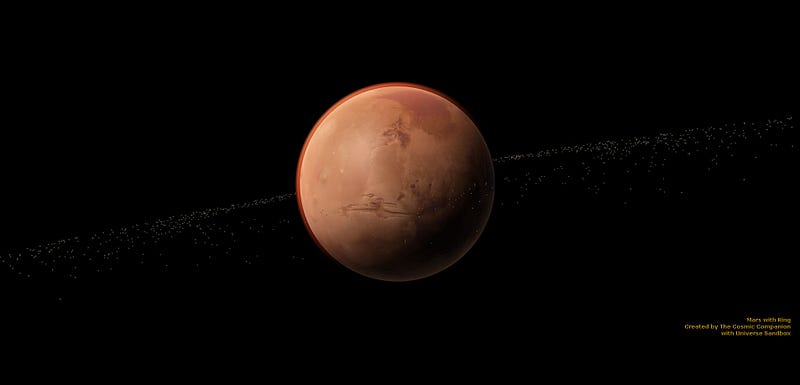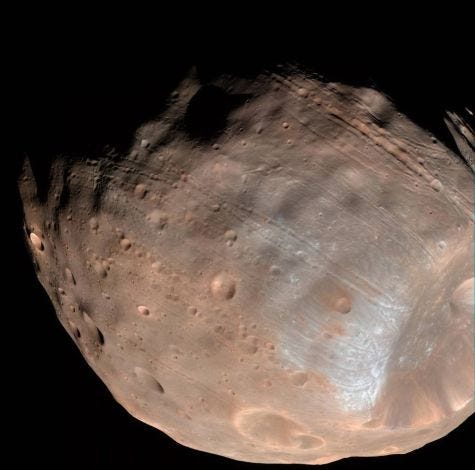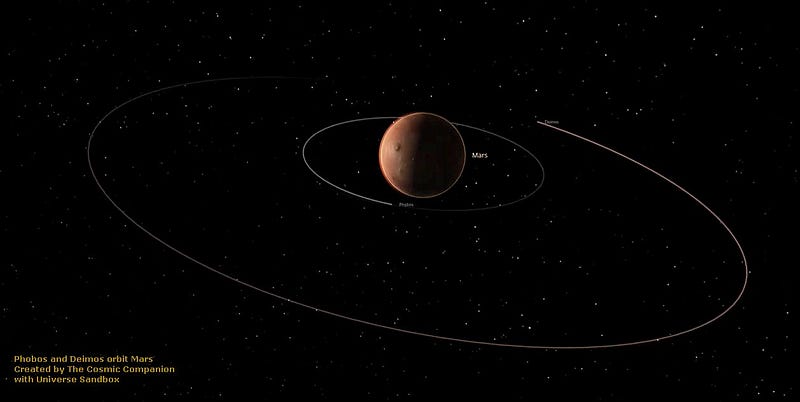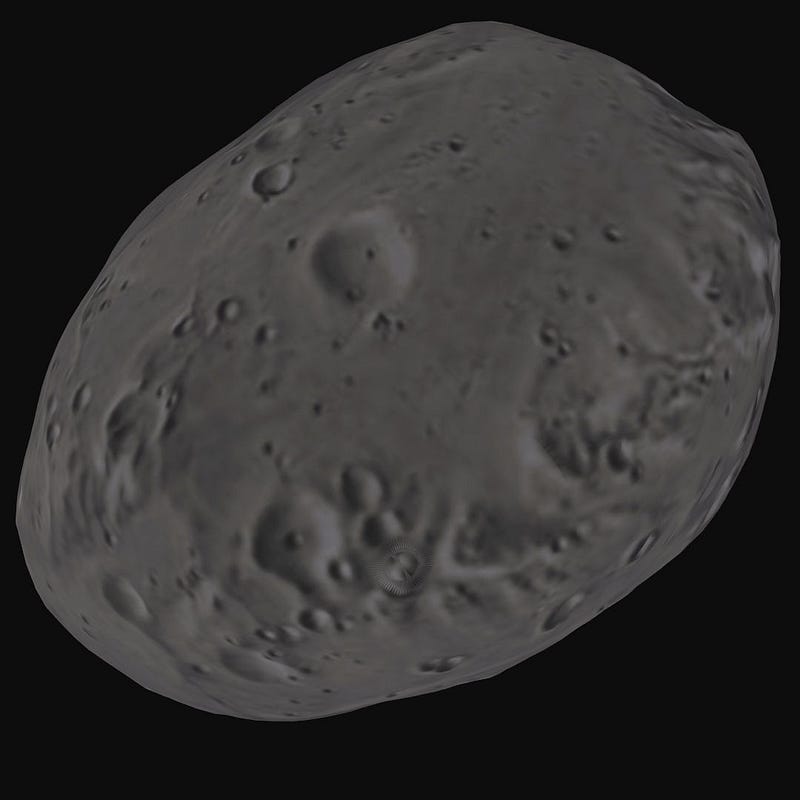# Did Mars Once Sport Its Own Rings? Exploring the Possibilities
Written on
Chapter 1: Unraveling Mars' Potential Ring History
Could Mars have once been adorned with its own set of rings? Recent research indicates that the Red Planet may have hosted a series of rings that formed and vanished over the course of billions of years. Traditionally, Mars is recognized as the Red Planet, while Saturn is celebrated for its stunning rings. However, a collaborative study from the SETI Institute and Purdue University posits that Mars might have had its own ring system.
Mars is home to two small moons, Phobos and Deimos, which bear more resemblance to asteroids than to larger moons like Earth's. Astronomers widely believe these irregularly-shaped bodies are asteroids that were captured by Mars' gravitational influence.

The study suggests that the orbits of the Martian moons can be best understood if a ring of rocks and ice once encircled Mars. Notably, the orbit of Deimos is tilted by approximately two degrees relative to Mars' equator—a detail often overlooked, but one that researchers believe may be linked to an ancient ring system.
This video delves into the possibility of Mars having once possessed rings, offering insights from experts and visualizations of what this might have looked like.
"The tilt in Deimos's orbit was previously disregarded, but with this new perspective, it has unveiled significant insights," stated Matija ?uk, the lead researcher from the SETI Institute. The notion that Mars might have harbored rings was initially proposed in 2017 by Purdue University's David Minton and his then-student, Andrew Hesselbrock.
Chapter 2: Mythology and Moons of Mars
Phobos and Deimos, often referred to as "potatoes in space," are named after the Greek deities of fear and terror, respectively. They are described in mythology as the sons of Ares (Mars) and Aphrodite, symbolizing the fear of loss for ancient followers. While typically depicted as handsome youths, some portrayals show Phobos with a lion's head.
Of the four rocky planets in our solar system, Mars uniquely possesses more than one moon, as Mercury and Venus have none, and Earth has only one.

Phobos, the larger of Mars' moons, measures just 22 kilometers (14 miles) in diameter, while Deimos, discovered in 1877 by Asaph Hall, is slightly smaller at 13 kilometers (8 miles). Both moons are composed of materials akin to carbonaceous chondrites, which provide clues about the early solar system's chemistry.
Chapter 3: The Dynamic Dance of Mars' Moons
Phobos orbits Mars at an altitude of merely 6,000 kilometers (3,700 miles), completing a revolution every four hours. However, it is gradually losing altitude and will eventually approach Mars too closely, leading to its disintegration and the formation of a new ring around the planet.
In contrast, Deimos maintains a more distant orbit, positioned over 20,000 kilometers (nearly 12,500 miles) from Mars. The orbits of these small moons are surprisingly circular, contrary to what one would expect from captured asteroids.

Researchers propose that a cycle of moons may have formed and disintegrated multiple times over Mars' extensive history. "A moon forms at the outer edge of the ring, interacts with it, and as the moon's orbit expands, the ring collapses onto Mars. The moon then spirals inward and eventually breaks apart, creating a new, less massive ring," ?uk explained.

The study suggests that during its interactions with Deimos, the ring may have stretched to three Mars radii and initially held a mass equivalent to 100 times that of Phobos. As time passed, the moons and rings became less massive due to material loss.
This video discusses the potential future of Mars' moons, including the possibility of a ring forming as Phobos disintegrates.
This research, presented at the virtual 236th Meeting of the American Astronomical Society and published in the Astrophysical Journal Letters, suggests that for a significant portion of its history, Mars may have been encircled by rings similar to those of the giant planets in our solar system.
James Maynard is the founder and publisher of The Cosmic Companion, currently residing in Tucson with his wife, Nicole, and their cat, Max.
Join us on The Cosmic Companion Network for our podcast, weekly video series, informative newsletter, news briefings on Amazon Alexa, and much more!